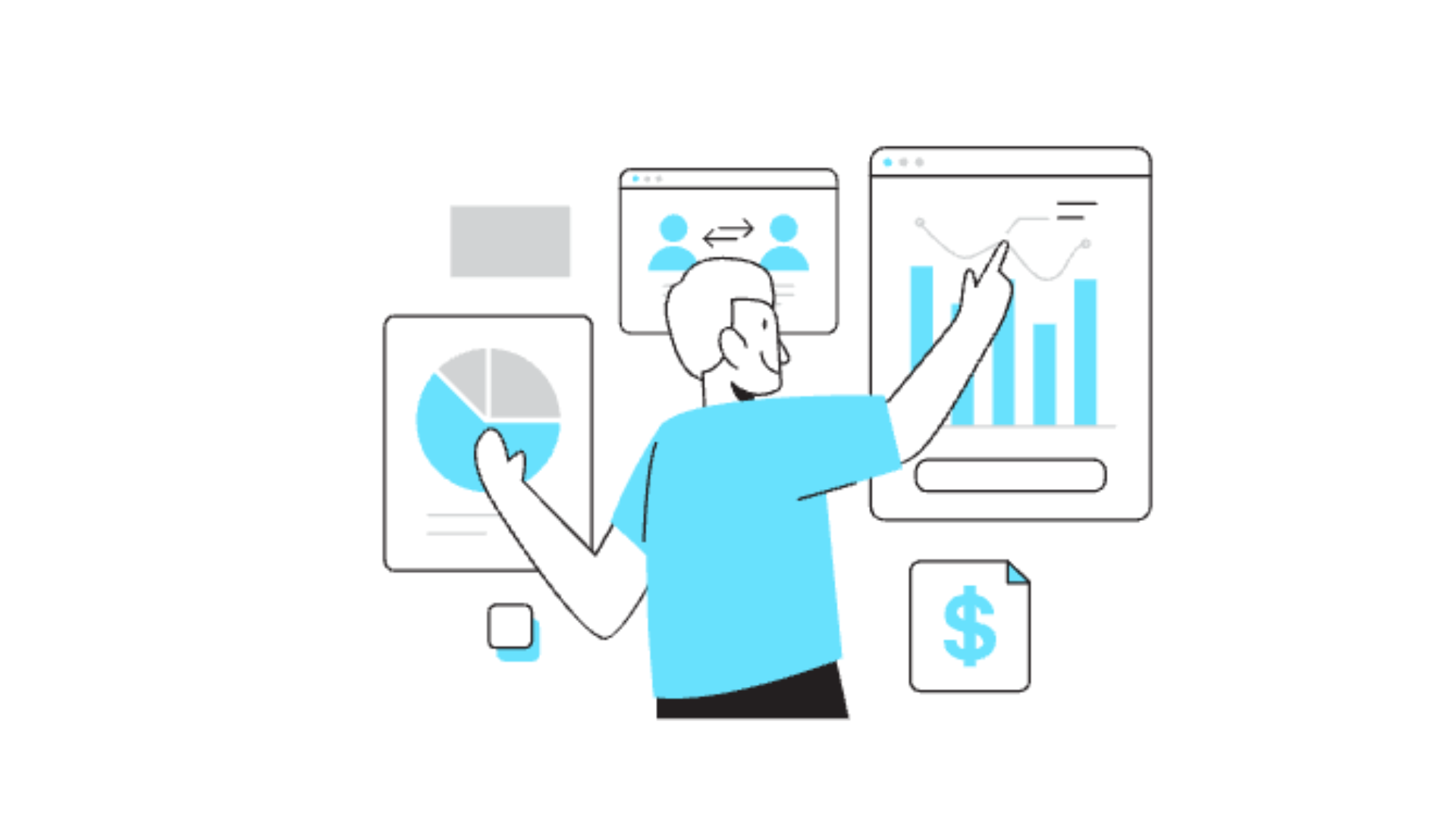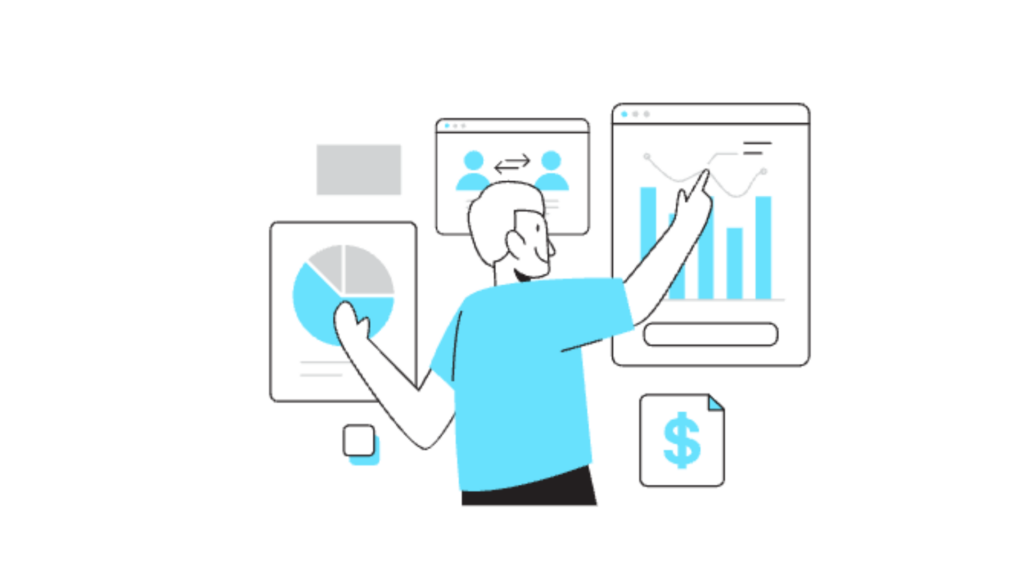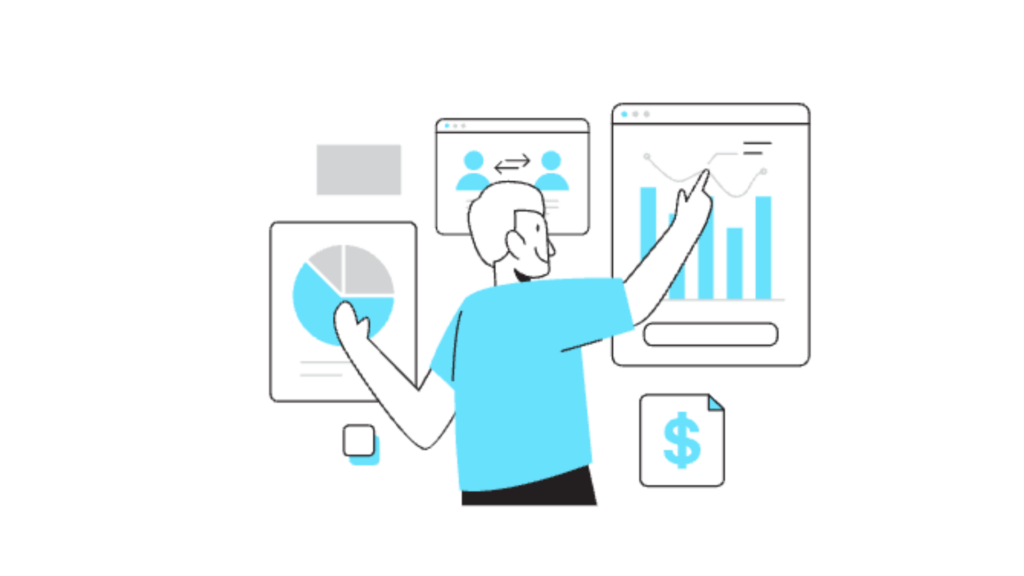13 Steps to Audit & Fix Your SEO

Sometimes, despite your best marketing efforts, you might find that your website doesn’t rank on search engine results.
If you’ve done some SEO work in the past, you might have seen success at first, but then your site fails to rank on search engine results pages (SERPs) after a few months.
This is likely the result of a poor SEO audit.
A bad or incomplete SEO audit can lead to a number of common issues. In this post, we’ll explore what those issues are and how you can fix them.
1. Check Your Visibility on Google
The first step in your SEO audit is to see how you’re currently ranking on Google. You can do this by searching for keywords you think your customers would use to find a business like yours.
For example, if you’re a wedding photographer in Chicago, you might search for “Chicago wedding photographer” or “Chicago wedding photography.”
Your goal is to see where you rank on the first page of Google. If you’re not on the first page, don’t worry. We’ll talk about how to improve your ranking later in this article.
Make a list of the keywords you’re currently ranking for and where you rank on Google. You’ll use this list to track your progress as you improve your SEO.
(Tip: if your site runs on Wix and you’re growing through affiliate marketing, check out this guide on the best Wix affiliate apps to help you boost traffic and conversions while auditing your SEO setup.)
2. Check for Basic Google Analytics and Search Console Implementation
Google Analytics and Google Search Console are the two most important tools you can use to monitor your website’s performance.
They’re both free, and they provide invaluable data about how your website is being found and used.
If you don’t already have Google Analytics and Google Search Console set up, now is the time to do it.
You can’t audit your website’s SEO without this data.
3. Create a Basic (But Useful) Dashboard
One of the most valuable things you can do for your clients is to create a basic dashboard where they can log in and see the progress you are making.
The key to a good dashboard is that it needs to be simple and easy to understand. It should also be focused on the most important metrics that will show your clients that you are making progress.
Here’s an example of a simple, effective SEO dashboard you can set up for your clients:
This dashboard includes the following widgets:
• A line graph showing organic traffic over time.
• A pie chart showing the distribution of organic traffic by channel.
• A bar graph showing the top organic keywords driving traffic to the site.
• A line graph showing the distribution of organic traffic by landing page.
• A bar graph showing the top organic landing pages by average time on page.
• A bar graph showing the top organic landing pages by bounce rate.
• A bar graph showing the top organic landing pages by goal completions.
• A line graph showing the distribution of organic traffic by device.
• A bar graph showing the top organic landing pages by average position.
• A line graph showing the distribution of organic traffic by location.
• A line graph showing the distribution of organic traffic by language.
• A line graph showing the distribution of organic traffic by browser.
• A bar graph showing the top organic landing pages by pageviews.
• A line graph showing the distribution of organic traffic by day of the week.
• A line graph showing the distribution of organic traffic by time of day.
• A bar graph showing the top organic landing pages by exit rate.
• A line graph showing the distribution of organic traffic by user type.
• A bar graph showing the top organic landing pages by number of users.
• A bar graph showing the top organic landing pages by number of new users.
• A bar graph showing the top organic landing pages by number of returning users.
• A bar graph showing the top organic landing pages by number of sessions.
• A bar graph showing the top organic landing pages by number of pageviews.
• A bar graph showing the top organic landing pages by number of unique pageviews.
• A bar graph showing the top organic landing pages by number of exits.
• A bar graph showing the top organic landing pages by number of entrances.
• A bar graph showing the top organic landing pages by number of bounces.
• A bar graph showing the top organic landing pages by number of goal completions.
• A bar graph showing the top organic landing pages by number of goal value.
• A bar graph showing the top organic landing pages by number of conversions.
• A bar graph showing the top organic landing pages by number of revenue.
• A bar graph showing the top organic landing pages by number of transactions.
• A bar graph showing the top organic landing pages by number of e-commerce conversion rate.
• A bar graph showing the top organic landing pages by number of goal conversion rate.
• A bar graph showing the top organic landing pages by number of goal completions per session.
• A bar graph showing the top organic landing pages by number of page value.
• A bar graph showing the top organic landing pages by number of transactions per user.
• A bar graph showing the top organic landing pages by number of revenue per user.
• A bar graph showing the top organic landing pages by number of e-commerce conversion rate per user.
• A bar graph showing the top organic landing pages by number of goal conversion rate per user.
• A bar graph showing the top organic landing pages by number of goal completions per session per user.
• A bar graph showing the top organic landing pages by number of page value per user.
• A bar graph showing the top organic landing pages by number of transactions per user per user.
• A bar graph showing the top organic landing pages by number of revenue per user per user.
• A bar graph showing the top organic landing pages by number of e-commerce conversion rate per user per user.
• A bar graph showing the top organic landing pages by number of goal conversion rate per user per user.
• A bar graph showing the top organic landing pages by number of goal completions per session per user per user.
• A bar graph showing the top organic landing pages by number of page value per user per user.
• A bar graph showing the top organic landing pages by number of transactions per user per user.
• A bar graph showing the top organic landing pages by number of revenue per user per user.
• A bar graph showing the top organic landing pages by number of e-commerce conversion rate per user per user.
• A bar graph showing the top organic landing pages by number of goal conversion rate per user per user.
• A bar graph showing the top organic landing pages by number of goal completions per session per user per user.
• A bar graph showing the top organic landing pages by number of page value per user per user.
• A bar graph showing the top organic landing pages by number of transactions per user per user.
4. Check Your 404 Pages
A 404 page is what you see when you try to visit a web page that doesn’t exist. This can happen when a page is deleted or when you mistype a URL.
404 pages can occur when a web page’s link is broken. This is something that can happen when you’re building backlinks to your site. If a website links to your site and that page is deleted, the link will be broken.
404 pages can hurt your SEO because they create a poor user experience. If someone clicks on a link to your site and ends up on a 404 page, they’ll probably leave your site. This increases your bounce rate, which can hurt your search rankings.
To check for 404 pages on your site, you can use a tool like Google Search Console. After you’ve logged in, click on Coverage in the left-hand menu.
You’ll see a list of any errors on your site, including any 404 pages. You can click on any of the errors to see which pages are affected and what the error is.
If you find any 404 pages, you can fix them by redirecting the page to a new one. You can also create a custom 404 page that directs users back to your site.
5. Optimize Your 404 Pages
404 pages are the dead ends of your website. They’re the pages people land on when they click a broken link or a page that no longer exists.
If your website doesn’t have a custom 404 page, people will see a generic “Page Not Found” message from your server.
This is a lost opportunity to keep people on your website and guide them to a page that does exist. Plus, it’s a bad user experience and can hurt your SEO.
You can create a custom 404 page that aligns with your brand and includes links to your most popular pages. You can also include a search bar so people can find what they’re looking for.
If you don’t have a custom 404 page, create one. If you do, use this as an opportunity to update it with new links and information.
6. Ensure You Have a Sitemap
A sitemap is a file where you can list the web pages of your site to tell Google and other search engines about the organization of your site content.
Search engine web crawlers like Googlebot read this file to more intelligently crawl your site.
If you don’t have a sitemap, you can easily create one with a tool like HubSpot’s Website Grader.
Once you’ve created your sitemap, you can upload it to Google Search Console to tell Google it exists. If you’re a HubSpot customer, you can upload your sitemap in the Files tool and track your sitemap’s performance in the SEO tool.
7. Check for Duplicate Content
Duplicate content is a big no-no in the world of SEO. Google and other search engines want to show users the most relevant and helpful content. If you have the same content on two different pages of your website, Google won’t know which one to show in the search results, and both pages will likely suffer.
There are a few different types of duplicate content that can occur on your website:
• Internal duplicate content: This is the most common type of duplicate content and it occurs when you have the same content on two or more pages of your website. This can happen if you have multiple URLs that lead to the same page, or if you have different versions of the same content on your website.
• Cross-domain duplicate content: This occurs when the same content appears on different websites.
• Scraped content: This occurs when another website copies and pastes your content onto their website.
• Duplicate content from syndication: This occurs when you publish content on your website that has already been published on another website.
The best way to avoid duplicate content is to create original content for your website. However, if you have a large website with hundreds or thousands of pages, it can be difficult to avoid duplicate content completely. In these cases, you can use canonical tags to tell search engines which version of the content is the original.
8. Check for Broken Links
Broken links can hurt your website’s SEO. They can make for a bad user experience, and they can also lead to a loss of link equity. One way to offset the loss of organic traffic from broken links is to boost other acquisition channels like referrals. A referral program powered by ReferralCandy can help you attract new customers through existing ones while you fix technical SEO issues.
Link equity, or link juice, is the authority that is passed from one page to another. When a page links to another page, it passes authority to that page. If a page has a lot of links pointing to it, and it links to your website, it can pass a lot of authority to your website.
If a page on your website has a lot of links pointing to it and it has broken links, it can lead to a loss of link equity. This can hurt your website’s SEO.
It’s important to regularly check your website for broken links and fix them. You can use a tool like the Ahrefs site audit tool to check your website for broken links.
9. Check Your Site Speed
Site speed is a crucial ranking factor. And, it’s also important for a good user experience.
Use Google’s PageSpeed Insights tool to see how quickly your site loads on both desktop and mobile.
If you get a low score, the tool will also give you some suggestions on how to improve it.
10. Check Your Title Tags
Title tags are found in the head section of your webpage and are the clickable headlines displayed in search results. They are also used to name the tabs in your browser and are shared when a webpage is shared on social media.
It’s important to have a unique title tag for every page on your website. Title tags should be between 50-60 characters and should include your main keyword for the page as close to the beginning of the title tag as possible.
If you have multiple pages with the same title tag, or if your title tag is too long, you could be hurting your SEO. This is a common problem with ecommerce websites, where the product name is often the same across multiple products.
You can use a tool like Screaming Frog to easily identify duplicate title tags on your website.
11. Check Your Meta Descriptions
Your meta descriptions are short snippets of text that appear on search engine results pages (SERPs) that give people an idea of what the page is about. They don’t directly impact your SEO, but they can help increase your click-through rate.
Meta descriptions should be 150-160 characters long, and they should give searchers a good idea of what they’ll find on your page. If you don’t have a meta description, search engines will pull the first few lines of text from your page and use that as the description. This can lead to a lot of confusion, and it’s not the best way to entice people to click on your page.
If your meta descriptions are too short or too long, or if they don’t accurately reflect the content on your page, you should update them.
12. Check for Content Gaps
Content gaps happen when there is a mismatch between what your audience is searching for and the content you have on your site.
To audit for content gaps, you can use a tool like SEMrush to analyze your competitors’ content and find out what keywords they are ranking for that you are not.
Or, you can use a tool like BuzzSumo to identify what content is performing well in your industry and see if you have anything similar on your site.
You can also use Google’s “People Also Ask” and “Searches Related to” sections to find out what questions people are asking about your industry and see if you have any content that answers those questions.
13. Check Your Robots.txt File
The robots.txt file is a file that helps search engine crawlers understand what pages on your site they should and should not index. It’s a good idea to have a robots.txt file on your site and to make sure it’s set up correctly.
To find your robots.txt file, just add “/robots.txt” to the end of your domain. Like this: www.yourdomain.com/robots.txt.
You can also check your robots.txt file in Google Search Console. Just navigate to the “Crawl” tab and click on “robots.txt Tester.”
If you find that certain pages on your site are not being indexed by Google, you can use the robots.txt file to allow Google to index them. If you find that certain pages on your site are being indexed by Google when you don’t want them to be, you can use the robots.txt file to block Google from indexing them.
Conclusion
In addition to these 13 steps, there are other things you can look at to improve your SEO. For example, if you’re a local business, you can look at your NAP (Name, Address, and Phone Number) citations. Are your business details consistent across the web?
You can also improve your site speed by compressing images, limiting the use of video and animations, and using a CDN. Plus, you can improve your site’s mobile-friendliness by using a responsive design, creating mobile sitemaps, and ensuring your site looks good on mobile devices.
These are just a few extra things you can do to improve your SEO, but the 13 steps outlined above are the most important.



